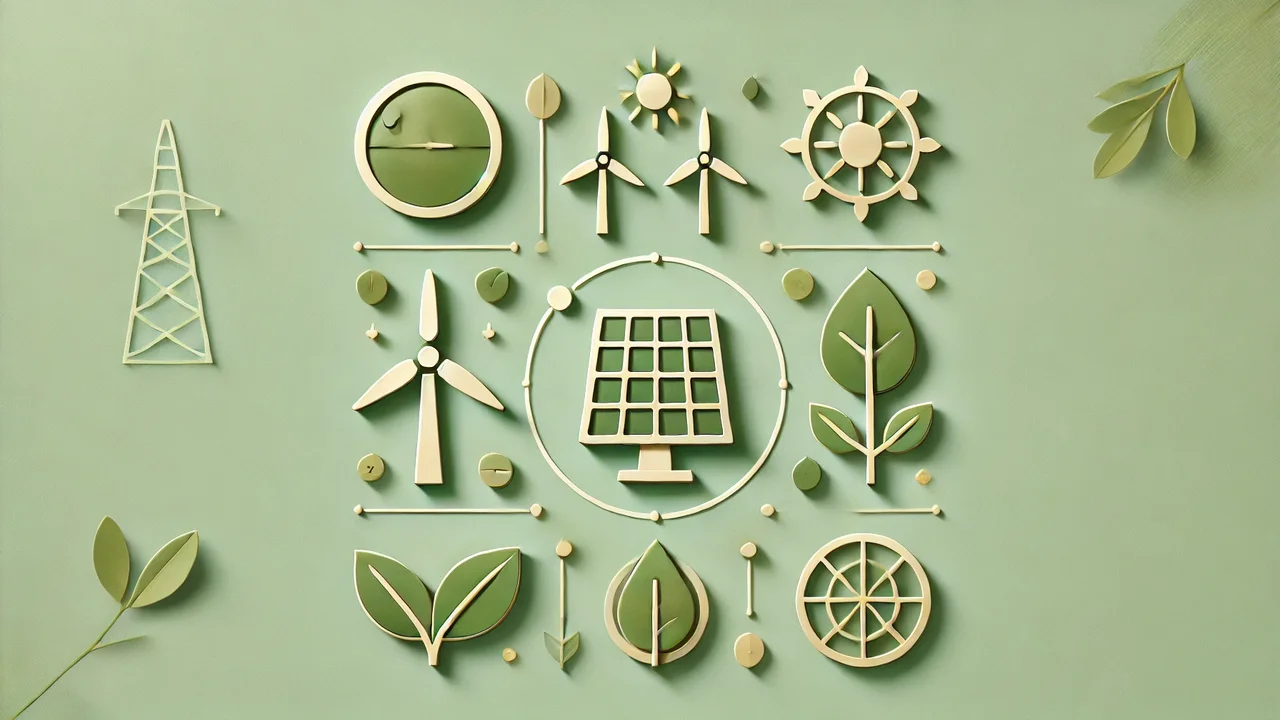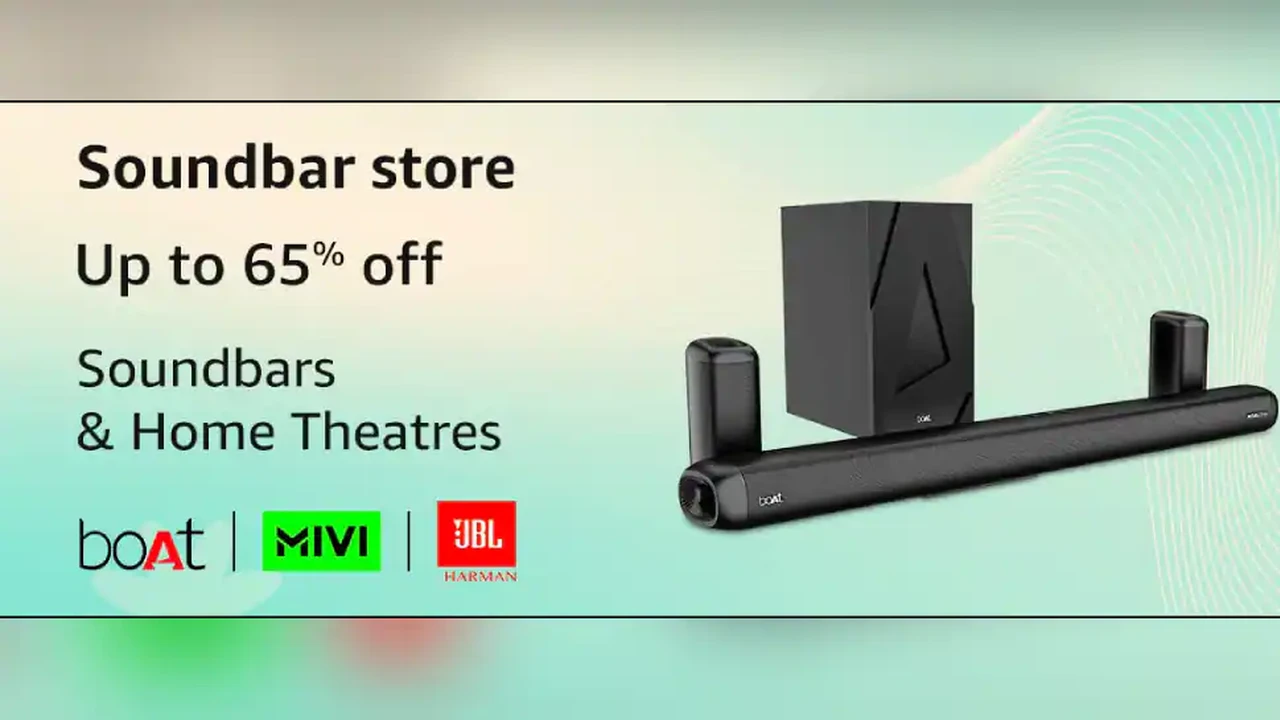
Best Green Tech Innovations for a Sustainable Future
Hey there, eco-conscious tech enthusiasts! Ever wonder how technology is stepping up to tackle some of our planet's biggest challenges? Well, you're in for a treat! We're diving deep into the world of green tech innovations, exploring the cutting-edge solutions that are paving the way for a more sustainable future. It's not just about recycling your old phone anymore; we're talking about revolutionary advancements that are changing how we generate energy, manage resources, and even build our cities. So, buckle up, because the future is looking greener than ever!
Renewable Energy Revolution Solar Wind and Beyond
When we talk about green tech, renewable energy is often the first thing that comes to mind, and for good reason! The advancements in solar and wind power have been nothing short of incredible. It's not just about massive solar farms and towering wind turbines anymore; these technologies are becoming more efficient, affordable, and integrated into our daily lives.
Solar Power Innovations Flexible Panels and Perovskites
Think solar panels are just those rigid, dark rectangles on rooftops? Think again! The solar industry is buzzing with innovations. We're seeing the rise of flexible solar panels, which can be integrated into building materials, clothing, and even vehicles. Imagine your backpack charging your phone as you walk, or your car's roof generating power while you drive! These flexible panels are opening up a whole new world of possibilities for distributed energy generation.
Then there's the exciting field of perovskite solar cells. These are a new class of materials that are showing incredible promise in terms of efficiency and cost-effectiveness. They're still largely in the research phase, but they have the potential to be much cheaper to produce than traditional silicon panels and can even be transparent, meaning they could be used in windows to generate electricity without blocking light. Keep an eye on companies like Oxford PV, which is at the forefront of perovskite research and commercialization.
Wind Energy Advancements Offshore and Vertical Turbines
Wind power is also getting a major upgrade. While large onshore wind farms are common, the real game-changer is offshore wind energy. By placing turbines out at sea, where winds are stronger and more consistent, we can generate massive amounts of clean electricity. Companies like Ørsted are leading the charge in developing these colossal offshore wind projects. These aren't just bigger versions of land-based turbines; they're engineered to withstand harsh marine environments and often feature advanced designs for maximum energy capture.
Another fascinating development is the exploration of vertical axis wind turbines (VAWTs). Unlike traditional horizontal axis turbines, VAWTs can operate more efficiently in turbulent urban environments and have a smaller footprint. While not as common as their horizontal counterparts for large-scale power generation, they hold promise for localized energy solutions in cities and residential areas. Think about a small, quiet turbine on top of an apartment building!
Sustainable Materials and Circular Economy Tech
Our planet is drowning in waste, especially electronic waste. Green tech is tackling this head-on by focusing on sustainable materials and promoting a circular economy, where products are designed for longevity, reuse, and recycling, minimizing waste and maximizing resource efficiency.
Bio-Based and Recycled Plastics in Electronics
The electronics industry is notorious for its reliance on plastics. However, innovators are increasingly incorporating bio-based plastics derived from renewable resources like corn starch or sugarcane, and recycled plastics from post-consumer waste. For example, companies like Dell and HP are using recycled ocean-bound plastics in some of their laptop components. This not only reduces the demand for virgin plastics but also helps clean up our oceans. When you're buying a new gadget, look for certifications or product descriptions that highlight the use of recycled or bio-based materials.
Modular Design and Repairability for Longevity
One of the biggest issues with modern electronics is their planned obsolescence. Green tech is pushing for modular design and improved repairability. This means products are designed so that individual components can be easily replaced or upgraded, extending the lifespan of the device. Think about the Fairphone, a smartphone specifically designed with modularity in mind, allowing users to easily replace the screen, battery, or camera. This approach significantly reduces e-waste and encourages consumers to repair rather than replace.
Advanced Recycling Technologies for Precious Metals
Our electronics contain valuable and often rare earth metals. Traditional recycling methods can be inefficient. New advanced recycling technologies are emerging that can more effectively extract these precious metals from e-waste, reducing the need for new mining operations, which are often environmentally destructive. Companies like Redwood Materials, founded by former Tesla CTO JB Straubel, are building large-scale facilities to recover materials from old batteries and electronics, creating a closed-loop supply chain.
Smart Grids and Energy Management Systems
Generating clean energy is one thing, but managing and distributing it efficiently is another. Smart grids and advanced energy management systems are crucial green tech innovations that optimize energy consumption and reduce waste.
AI Powered Grid Optimization and Demand Response
Imagine an electricity grid that can intelligently respond to demand and supply fluctuations. That's the promise of AI-powered grid optimization. Artificial intelligence can analyze energy consumption patterns, predict demand, and even reroute power to prevent waste and blackouts. This also enables demand response programs, where consumers can be incentivized to reduce their energy usage during peak times, easing the strain on the grid. Companies like Siemens and GE Grid Solutions are heavily invested in developing these intelligent grid technologies.
Home Energy Management Systems and Smart Appliances
On a smaller scale, home energy management systems (HEMS) are empowering individuals to take control of their energy consumption. These systems, often integrated with smart home hubs, allow you to monitor your energy usage in real-time, identify energy vampires, and even automate appliances to run during off-peak hours. Smart appliances, from refrigerators to washing machines, are increasingly connected to these systems, allowing for optimized energy use. Products like the Sense Energy Monitor (around $300) can give you detailed insights into your home's energy consumption, helping you identify areas for savings. Many smart thermostats, like the Ecobee SmartThermostat with Voice Control (around $200-250), also offer robust energy reporting features.
Sustainable Transportation Innovations Electric and Beyond
Transportation is a major contributor to carbon emissions. Green tech is driving a revolution in how we move people and goods, with electric vehicles leading the charge, but also exploring other innovative solutions.
Electric Vehicles EV Advancements and Charging Infrastructure
The rise of electric vehicles (EVs) has been phenomenal. Beyond just cars, we're seeing electric buses, trucks, and even electric planes in development. Battery technology is constantly improving, offering longer ranges and faster charging times. The development of a robust charging infrastructure is crucial for widespread EV adoption. Companies like ChargePoint and EVgo are rapidly expanding public charging networks, while innovations in home charging, like bidirectional charging (allowing your EV to power your home), are also emerging. For example, the Tesla Wall Connector (around $400-500) is a popular home charging solution, while portable chargers like the JuiceBox 40 Smart EV Charger (around $600-700) offer flexibility.
Micromobility Solutions E-Bikes and Scooters
For shorter distances, micromobility solutions like electric bikes (e-bikes) and electric scooters are gaining immense popularity. They offer a sustainable and often faster alternative to cars in urban environments, reducing traffic congestion and air pollution. Brands like Rad Power Bikes (e-bikes starting around $1,500) and companies offering shared scooter services like Lime and Bird are transforming urban commutes. These are fantastic for reducing your carbon footprint for daily errands or short commutes.
Hydrogen Fuel Cell Technology for Heavy Transport
While batteries are great for many EVs, hydrogen fuel cell technology holds significant promise for heavy-duty transportation like trucks, trains, and even ships, where battery weight and charging times can be prohibitive. Fuel cells produce electricity by combining hydrogen and oxygen, with water as the only byproduct. Companies like Hyundai and Toyota are investing heavily in hydrogen fuel cell vehicles, and infrastructure for hydrogen refueling is slowly but surely being developed.
Sustainable Agriculture and Food Tech
Our food systems have a significant environmental impact. Green tech is offering innovative solutions to make agriculture more sustainable and to produce food in more eco-friendly ways.
Vertical Farming and Controlled Environment Agriculture
Vertical farming and controlled environment agriculture (CEA) are revolutionizing food production, especially in urban areas. These indoor farms use stacked layers, often with LED lighting and hydroponics or aeroponics, to grow crops with significantly less water and land than traditional farming. This reduces transportation emissions and allows for year-round production regardless of climate. Companies like Plenty and AeroFarms are building large-scale vertical farms that can supply fresh produce to local communities. A small home vertical garden system like the AeroGarden Bounty Elite (around $300-400) can even let you grow herbs and small vegetables right in your kitchen.
Precision Agriculture and IoT in Farming
Precision agriculture uses technology like IoT sensors, drones, and AI to optimize farming practices. Farmers can monitor soil conditions, crop health, and weather patterns in real-time, allowing them to apply water, fertilizers, and pesticides only where and when needed. This reduces waste, conserves resources, and minimizes environmental impact. Companies like John Deere are integrating advanced IoT solutions into their farming equipment, making agriculture smarter and more sustainable.
Alternative Proteins and Lab Grown Meat
The livestock industry is a major contributor to greenhouse gas emissions. Green tech is exploring alternative proteins, such as plant-based meats (e.g., Beyond Meat, Impossible Foods, products typically ranging from $5-10 per pack), and the fascinating field of lab-grown meat (also known as cultivated meat). Lab-grown meat is produced by culturing animal cells in a bioreactor, eliminating the need for raising and slaughtering animals. While still in its early stages of commercialization and often quite expensive, companies like Upside Foods and Good Meat are making significant strides in bringing these sustainable protein sources to market.
Water Conservation and Management Technologies
Water scarcity is a growing global concern. Green tech is providing innovative solutions for conserving, purifying, and managing our most precious resource.
Smart Water Meters and Leak Detection Systems
Just like smart energy meters, smart water meters provide real-time data on water consumption, helping individuals and municipalities identify leaks and wasteful habits. Coupled with leak detection systems, which can alert homeowners to unusual water flow, these technologies can prevent significant water loss and damage. Products like the Flo by Moen Smart Water Detector (around $50-70) can be placed near appliances to detect leaks, while the Flo by Moen Smart Water Shutoff (around $500-700) can even automatically shut off your main water supply in case of a major leak.
Advanced Water Purification and Desalination
Access to clean drinking water is a fundamental human right. Green tech is developing more energy-efficient and cost-effective methods for water purification and desalination (removing salt from seawater). Innovations in membrane technology and renewable energy-powered desalination plants are making it possible to turn previously unusable water sources into potable water, especially in arid regions. Companies like IDE Technologies are leaders in large-scale desalination projects.
Rainwater Harvesting and Greywater Recycling Systems
On a household or community level, rainwater harvesting and greywater recycling systems are simple yet effective green tech solutions. Rainwater harvesting collects and stores rainwater for non-potable uses like irrigation or toilet flushing. Greywater recycling systems treat water from sinks, showers, and washing machines so it can be reused for similar purposes. These systems significantly reduce reliance on municipal water supplies and conserve fresh water. Many companies offer DIY kits or professional installation services for these systems, with costs varying widely depending on scale and complexity.
Carbon Capture and Storage Technologies
Even as we transition to renewables, there's still a need to address existing carbon emissions. Carbon capture and storage (CCS) technologies aim to remove carbon dioxide from the atmosphere or directly from industrial emissions.
Direct Air Capture DAC and Carbon Mineralization
Direct Air Capture (DAC) technology literally sucks carbon dioxide directly out of the ambient air. Once captured, the CO2 can be stored underground (carbon sequestration) or even converted into useful products. Companies like Climeworks are operating DAC plants that are already removing CO2 from the atmosphere. Another exciting area is carbon mineralization, where CO2 is chemically reacted with certain minerals to form stable carbonates, effectively turning it into rock. This offers a permanent storage solution.
Industrial Carbon Capture and Utilization CCU
For heavy industries like cement and steel production, which are difficult to decarbonize, industrial carbon capture and utilization (CCU) is a key green tech solution. This involves capturing CO2 emissions directly from industrial smokestacks before they enter the atmosphere. The captured CO2 can then be used as a raw material for other products, such as synthetic fuels, building materials, or even carbonated beverages. This turns a waste product into a valuable resource, creating a circular carbon economy. Companies like Carbon Engineering are developing technologies for both DAC and industrial point-source capture.
Smart Cities and Urban Sustainability Tech
As more of the world's population moves to urban areas, creating sustainable cities is paramount. Smart city technologies leverage data and connectivity to make urban environments more efficient, livable, and environmentally friendly.
Intelligent Transportation Systems and Smart Traffic Management
Smart cities use intelligent transportation systems (ITS) to optimize traffic flow, reduce congestion, and lower emissions. This includes smart traffic lights that adapt to real-time conditions, connected vehicle technology, and integrated public transport systems. By reducing idling time and optimizing routes, these systems can significantly cut down on fuel consumption and air pollution. Companies like Cisco and IBM are involved in developing these complex urban management systems.
Smart Waste Management and Recycling Optimization
Waste management in cities is a huge challenge. Smart waste management systems use IoT sensors in bins to monitor fill levels, allowing waste collection routes to be optimized, reducing fuel consumption and operational costs. AI can also be used to sort waste more efficiently at recycling facilities, improving recycling rates. Companies like Bigbelly offer smart bins that compact waste and send alerts when full, leading to more efficient collection.
Green Building Technologies and Energy Efficient Infrastructure
The buildings we live and work in are major energy consumers. Green building technologies focus on designing and constructing buildings that are highly energy-efficient, use sustainable materials, and minimize their environmental footprint. This includes advanced insulation, smart windows that adjust to sunlight, geothermal heating and cooling, and integrated renewable energy sources. Certifications like LEED (Leadership in Energy and Environmental Design) promote these sustainable building practices. Many modern smart home devices, like smart thermostats and smart lighting, contribute to making individual buildings greener.
So, there you have it! A whirlwind tour of some of the most exciting green tech innovations shaping our sustainable future. From the way we power our homes and move around, to how we grow our food and manage our waste, technology is offering powerful solutions to our environmental challenges. It's a dynamic and rapidly evolving field, and it's truly inspiring to see how human ingenuity is being harnessed to protect our planet. Keep an eye out for these innovations, support the companies driving them, and remember that every step towards a greener future counts!
:max_bytes(150000):strip_icc()/277019-baked-pork-chops-with-cream-of-mushroom-soup-DDMFS-beauty-4x3-BG-7505-5762b731cf30447d9cbbbbbf387beafa.jpg)






